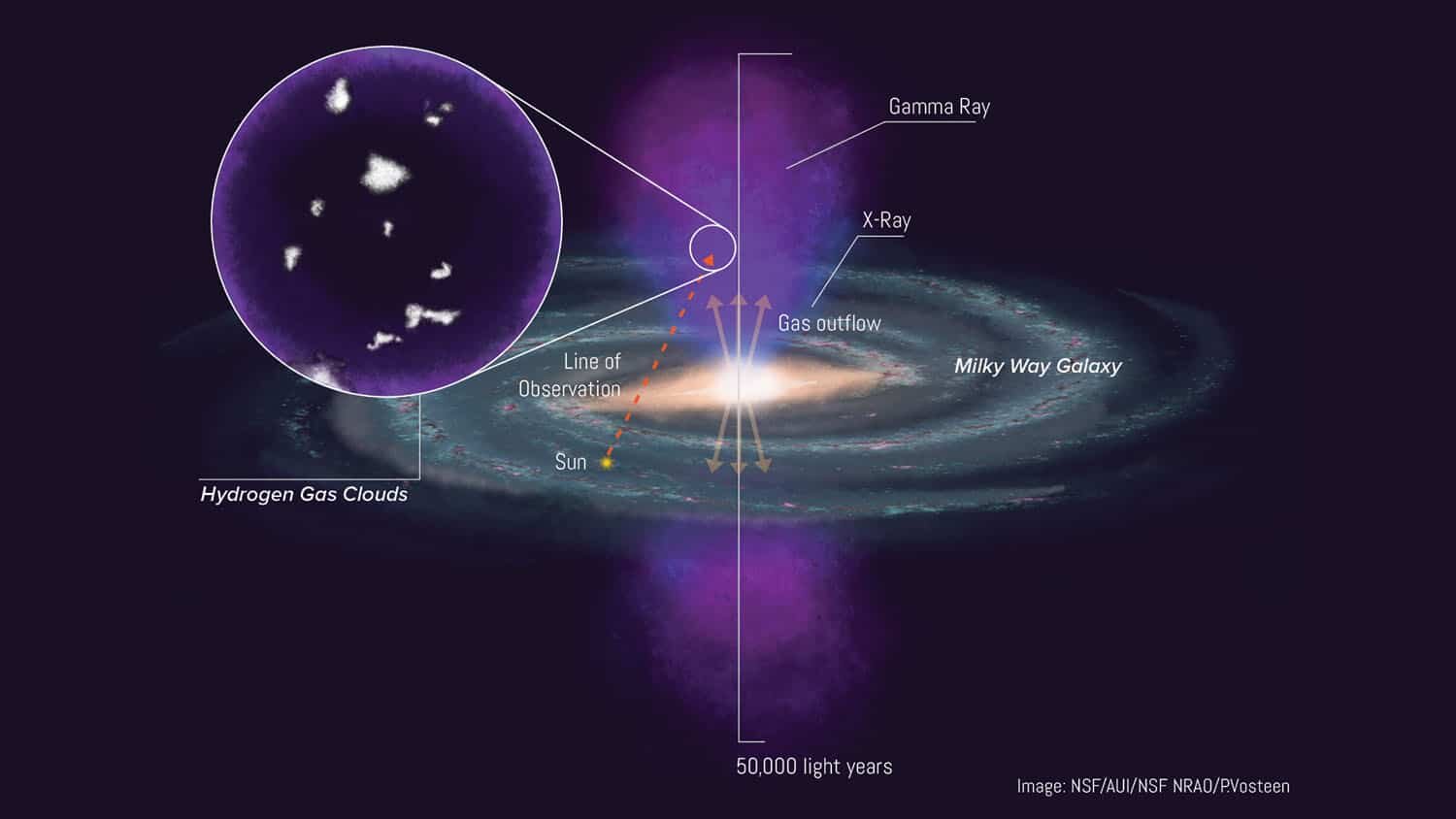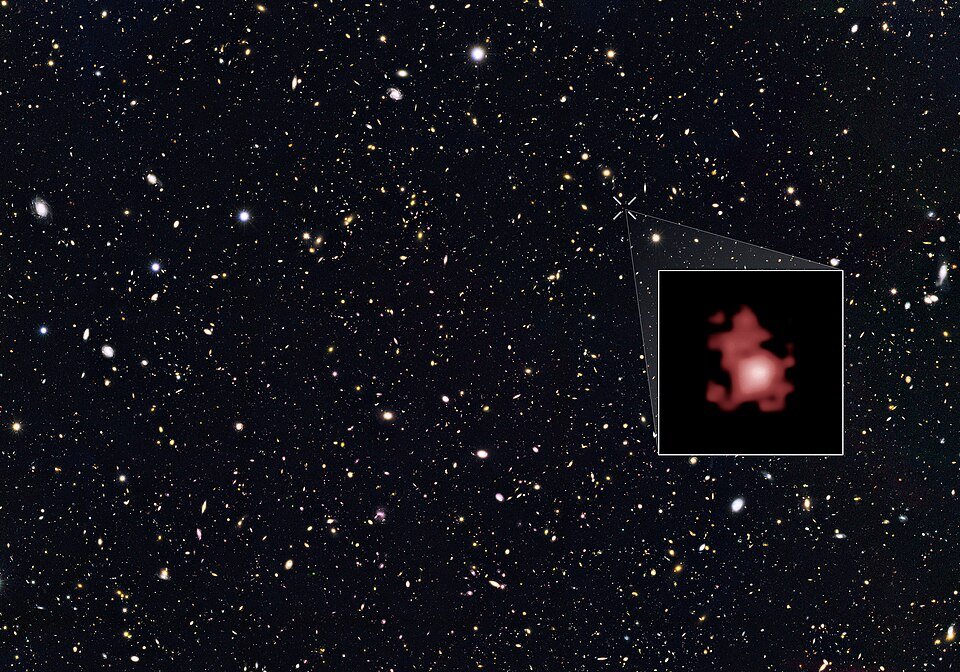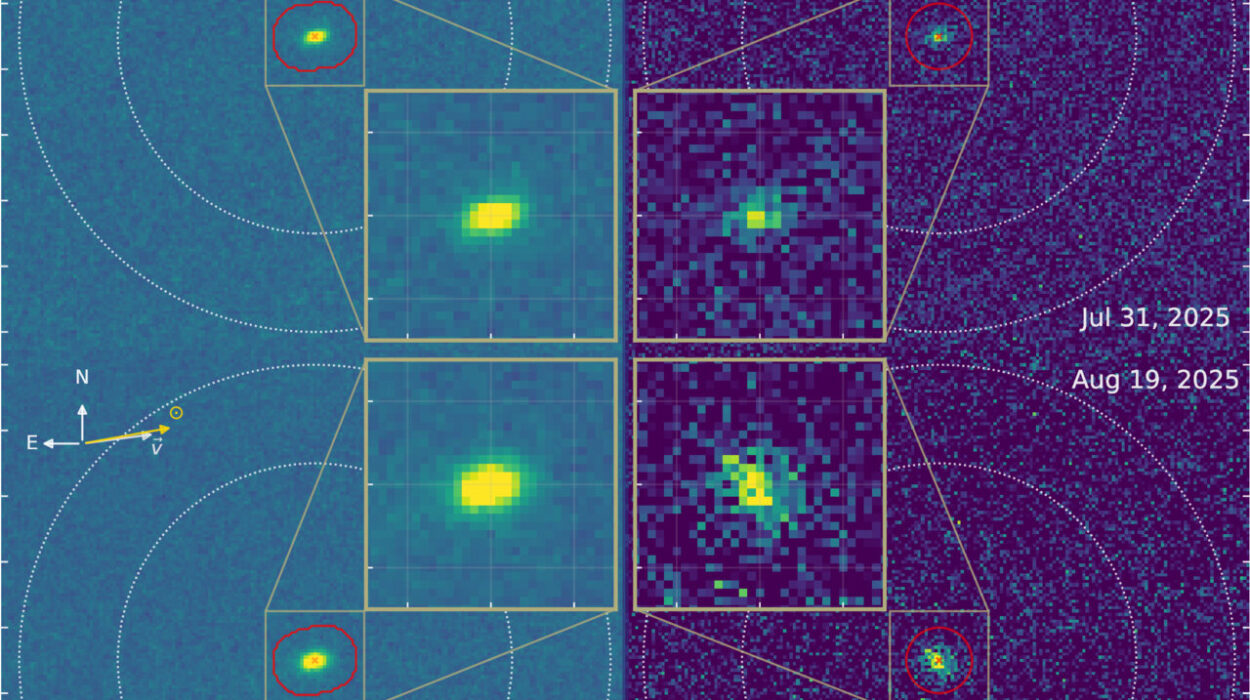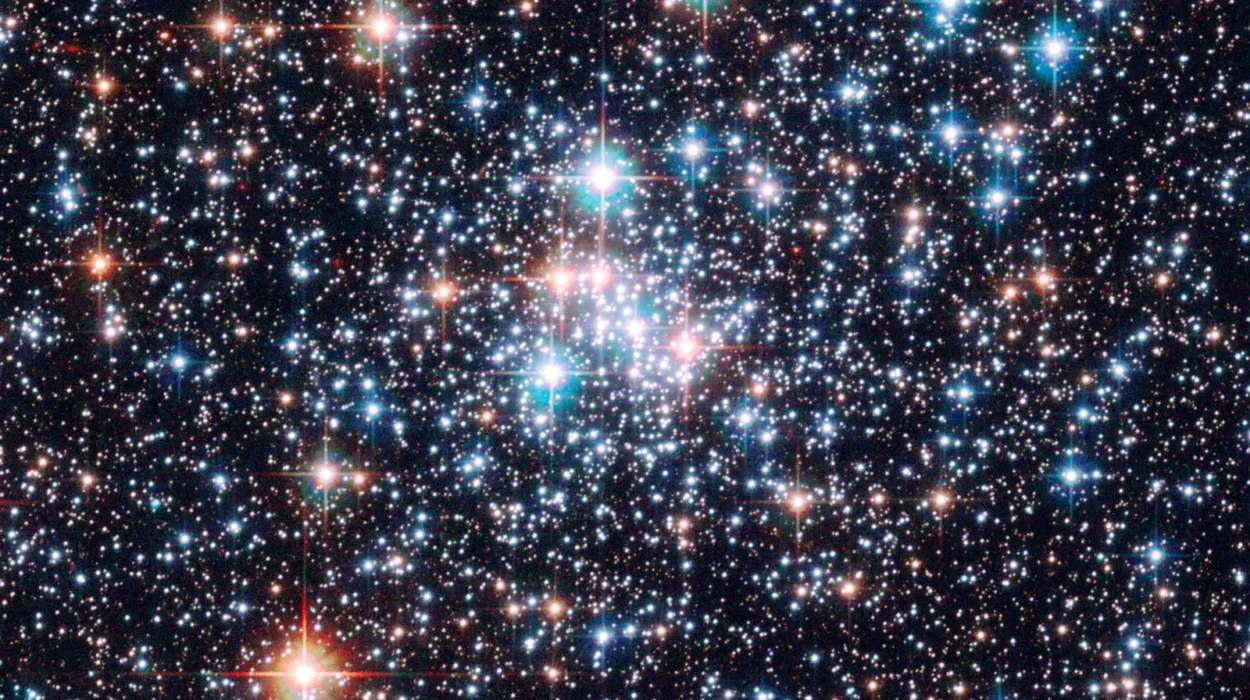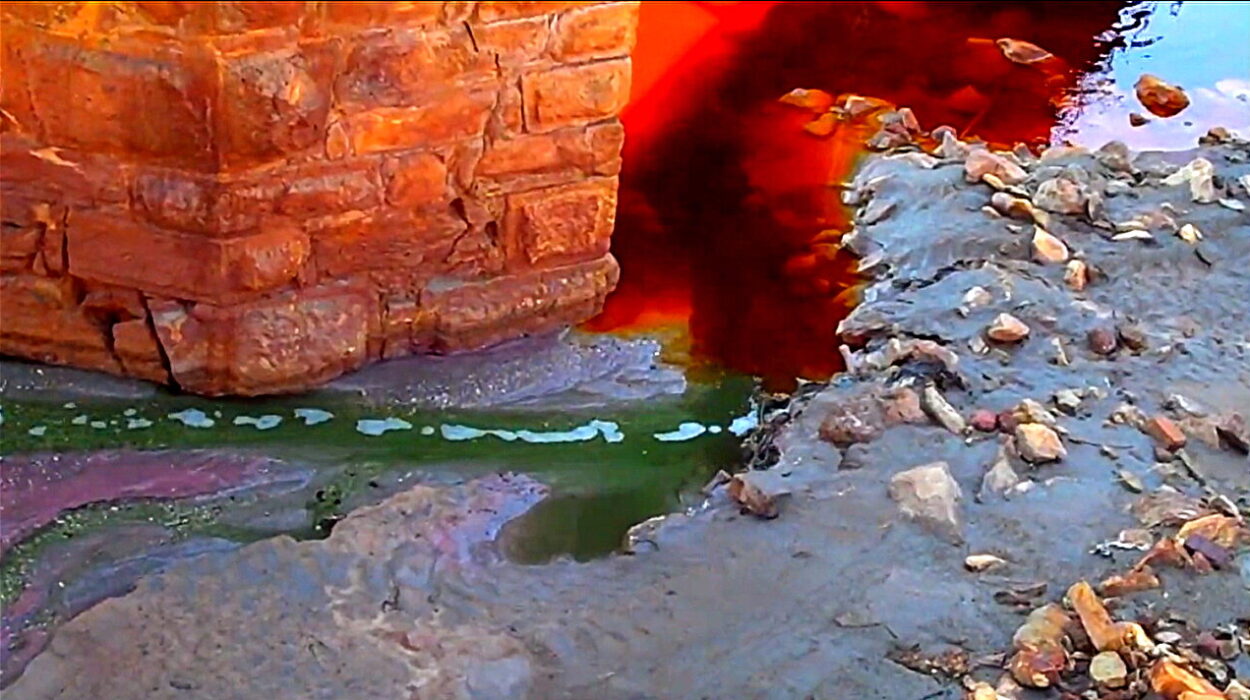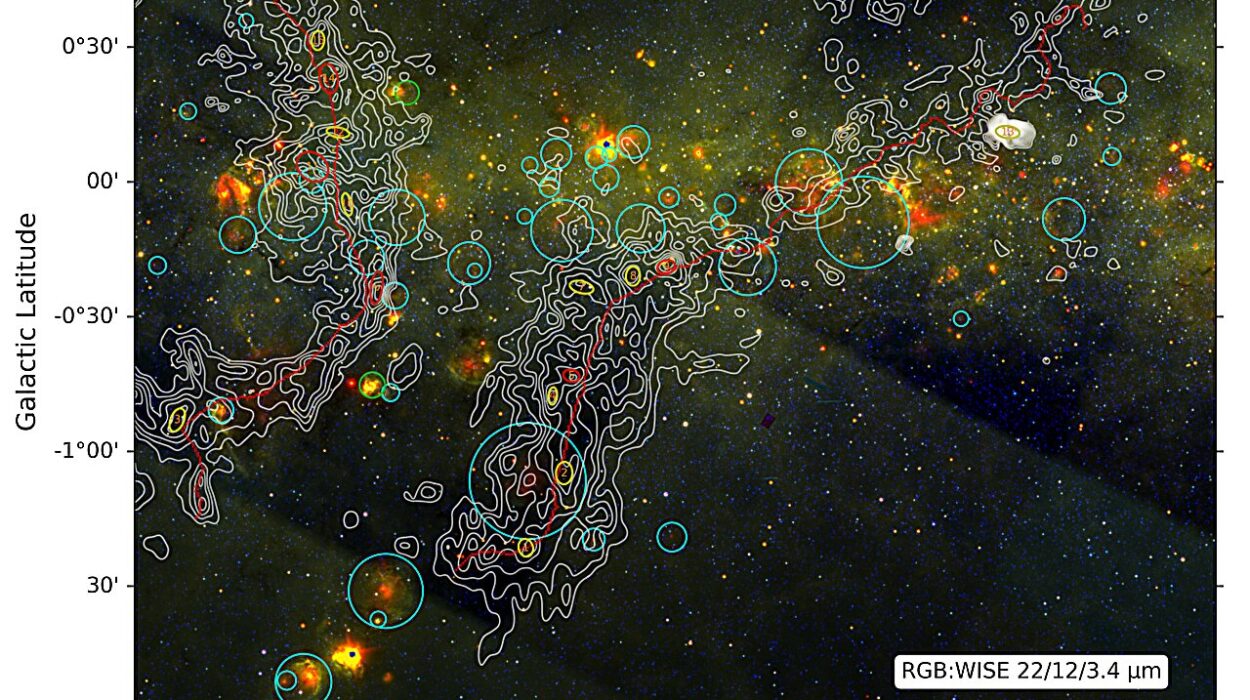High above and below the swirling disk of the Milky Way, titanic bubbles of scorching gas billow into space—a cosmic echo of a violent past. For over a decade, astronomers have marveled at these colossal structures known as the Fermi bubbles, glowing faintly with high-energy radiation and hinting at galactic fireworks in the not-so-distant past.
But inside these incandescent giants, scientists have now discovered something astonishing: clouds of relatively cool gas, floating like ice cubes in the heart of a cosmic volcano.
The finding, reported in The Astrophysical Journal Letters, doesn’t just add an intriguing twist to the story of our galaxy’s tempestuous center. It reshapes how astronomers understand the life, age, and evolution of the Fermi bubbles themselves, suggesting these colossal structures are younger than anyone thought—and far more complex.
A Volcano at the Heart of the Galaxy
The Fermi bubbles were first unveiled to human eyes in 2010, when NASA’s Fermi Gamma-ray Space Telescope revealed immense lobes of energetic radiation ballooning from the Milky Way’s core. Each bubble stretches roughly 25,000 light-years into space—together spanning a vertical slice of our galaxy’s halo some 50,000 light-years tall.
“Fermi bubbles are enormous structures of hot gas that extend above and below the disk of the Milky Way,” says Rongmon Bordoloi, associate professor of physics at North Carolina State University and the study’s corresponding author. “They’re the signature of an extremely sudden and violent event, like a volcanic eruption but on a massive scale.”
What could spark such a cosmic blast? Astronomers suspect either a burst of star formation funneling out massive stellar winds, or a powerful jet unleashed by the Milky Way’s central supermassive black hole, Sagittarius A*. Either scenario would send hot, charged gas careening into space at incredible speeds.
Hunting Secrets in Radio Waves
While the Fermi bubbles glow fiercely in gamma rays and X-rays, the new discovery came thanks to the U.S. National Science Foundation’s Green Bank Telescope (GBT), the world’s largest fully steerable radio telescope. This technological marvel allowed astronomers to peer inside the bubbles in exquisite detail, capturing faint signals of neutral hydrogen—the most common element in the universe, and the raw material from which stars are born.
“These measurements were twice as sensitive as previous surveys,” says Bordoloi. “It let us detect finer details within the bubbles than ever before.”
Instead of finding a uniform sea of million-degree plasma, the team stumbled upon an unexpected and perplexing phenomenon: dense clouds of cooler, neutral hydrogen gas, each weighing several thousand times the mass of our Sun. These clouds hover 12,000 light-years above the Milky Way’s center, embedded within the ferocious heat of the bubbles.
Ice in a Furnace
“These clouds of neutral hydrogen are cold, relative to the rest of the Fermi bubble,” explains Andrew Fox, ESA-AURA Astronomer at the Space Telescope Science Institute and co-author of the study. “They’re around 10,000 degrees Kelvin—so cooler than their surroundings by at least a factor of 100. Finding those clouds within the Fermi bubble is like finding ice cubes in a volcano.”
It’s a poetic but scientifically baffling metaphor. The Fermi bubbles’ million-degree temperatures and violent turbulence should rapidly shred any cooler gas clouds, vaporizing them into oblivion within a few million years. Yet here they are, drifting serenely amid the chaos.
“The models say these clouds shouldn’t survive,” says Bordoloi. “If the Fermi bubbles were older than about 10 million years, there wouldn’t be any cool gas left.”
Rewriting the Fermi Bubbles’ Timeline
The presence of these icy interlopers has forced astronomers to rethink the bubbles’ age. The cool clouds, like cosmic clocks, provide crucial constraints on how recently the bubbles formed.
“These gases are moving around a million miles per hour,” Bordoloi says. “That also marks the Fermi bubbles as a recent development. These clouds weren’t here when dinosaurs roamed Earth. In cosmic time scales, a million years is the blink of an eye.”
Independent ultraviolet observations from the Hubble Space Telescope (HST) had previously hinted at complex, multi-temperature gas within the bubbles, but the Green Bank data clinched the case. The radio signals lined up precisely along sightlines where Hubble had already detected highly ionized gas at temperatures ranging from 100,000 to a million degrees Kelvin—a signature of cool gas being stripped and evaporated by its hotter surroundings.
“It all fits together like pieces of a puzzle,” Bordoloi says. “We’re seeing direct evidence of cool gas interacting with a ferocious outflow.”
Cosmic Winds and Hidden Highways
So where did these cool clouds come from?
“We believe that these cold clouds were swept up from the Milky Way’s center and carried aloft by the very hot wind that formed the Fermi bubbles,” says Jay Lockman, astronomer at the Green Bank Observatory and co-author of the paper.
It’s a cosmic version of watching smoke and ash billow from a volcano, or seeing clouds carried high into Earth’s atmosphere by powerful winds. Except these winds travel at roughly a million miles per hour.
“Just as you can’t see the motion of the wind on Earth unless there are clouds to track it, we can’t see the hot wind from the Milky Way but can detect radio emission from the cold clouds it carries along,” Lockman adds.
Implications for Galactic Evolution
Beyond the drama of a recent galactic eruption, the discovery has profound implications for how galaxies grow and evolve.
Astronomers have long wrestled with a puzzle: how galaxies like the Milky Way regulate their own star formation and growth. Giant outflows—like the Fermi bubbles—are one way galaxies eject excess gas and energy, preventing runaway star formation. But the details of how hot outflows interact with colder gas remain murky.
“This discovery challenges our understanding of how cold clouds can survive in the extreme energetic environment of the Galactic Center,” Bordoloi says. “It places strong empirical constraints on how outflows interact with their surroundings.”
These new findings will feed directly into advanced computer simulations of galactic feedback, helping scientists refine models of how galaxies evolve, recycle gas, and sculpt their environments over billions of years.
A Young Phenomenon in Cosmic Time
For now, the Fermi bubbles remain some of the Milky Way’s most magnificent mysteries. But one thing is clear: they are younger and more dynamic than once imagined.
“These bubbles weren’t there for most of the galaxy’s history,” Bordoloi says. “Whatever created them happened relatively recently—in cosmic terms. And these cool gas clouds are like breadcrumbs, helping us retrace that story.”
From the searing heat of the bubbles to the delicate tendrils of cooler hydrogen, the center of our galaxy continues to surprise, revealing secrets that could echo across the cosmos.
As astronomers keep listening to the whispers of hydrogen in radio waves and tracing ultraviolet signatures in distant starlight, the tale of the Fermi bubbles—and the mysterious forces at the heart of the Milky Way—has only just begun.
Reference: Rongmon Bordoloi et al, A New High-latitude H i Cloud Complex Entrained in the Northern Fermi Bubble, The Astrophysical Journal Letters (2025). DOI: 10.3847/2041-8213/addd16
